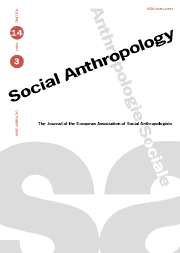Masks and madness. Ritual expressions of the transition to adulthood among Miskitu adolescents
Published online by Cambridge University Press: 26 October 2001
Abstract
This article considers two forms of action among Miskitu adolescents, both of which encode in ritualised form anxieties and desires concerned with the imminent categorical transition from adolescence to adulthood. The first of these is a masked dance known as ‘mosko’ which is performed mainly by both young unmarried man and women in the village of Kakabila. The second is a supposedly culture-bound, and evidently contagious, condition known as ‘grisi siknis’ which afflicts mainly young unmarried women in Miskitu-speaking communities throughout eastern Nicaragua and Honduras. Analysis of this material suggests that where rituals directly enacting transformations to adulthood are absent, modes of action allowing individuals to express concerns surrounding this change of status are likely to be particularly dramatic.
- Type
- Research Article
- Information
- Copyright
- © 2001 European Association of Social Anthropologists
Footnotes
- 1
- Cited by




